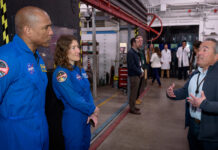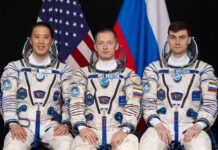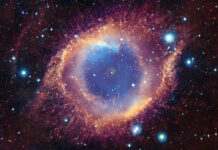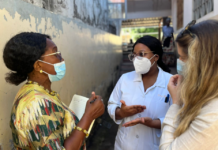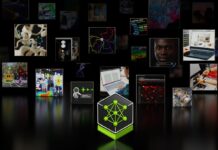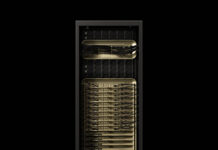BurstCube Team’s Stellar Response and Technological Innovations: A Leap for Astrophysics
In a recent update from NASA, Jeremy Perkins, the principal investigator at Goddard Space Flight Center, expressed immense pride in his team’s performance amidst challenging circumstances. Perkins highlighted how the BurstCube mission has not only advanced scientific research and technology but also provided invaluable learning experiences for emerging astrophysicists.
A Closer Look at BurstCube
BurstCube is a small satellite mission designed to detect gamma-ray bursts (GRBs), which are powerful and energetic explosions occurring in distant galaxies. These bursts are pivotal for understanding various cosmic phenomena, including the formation of black holes and neutron stars. Typically, GRBs release more energy in a few seconds than the Sun will emit in its entire 10-billion-year lifetime.
The mission involves a compact satellite equipped with advanced gamma-ray detectors. These detectors are designed to capture high-energy photons emitted during GRBs, allowing scientists to study the bursts’ characteristics and origins. BurstCube’s small size and innovative technology make it a cost-effective and efficient tool for space exploration.
The Challenge and the Response
Perkins acknowledged the hurdles faced by the BurstCube team. Space missions often encounter unpredictable challenges, ranging from technical glitches to environmental factors in space. However, the team’s resilience and problem-solving skills have turned these challenges into opportunities for growth and innovation.
“I’m proud of how the team responded to the situation and is making the best use of the time we have in orbit,” Perkins stated. His words reflect the team’s dedication to maximizing the mission’s potential despite the obstacles. This adaptability is crucial in space missions where every second and every piece of data counts.
Learning and Innovation
One of the significant aspects of the BurstCube mission is its role in fostering new talent within the astrophysics community. Small missions like BurstCube serve as practical training grounds for early-career scientists and engineers. Working on such projects allows them to gain hands-on experience, develop problem-solving skills, and contribute to cutting-edge research.
Perkins noted, “Small missions like BurstCube not only provide an opportunity to do great science and test new technologies, like our mission’s gamma-ray detector, but also important learning opportunities for the up-and-coming members of the astrophysics community.” This dual focus on scientific advancement and education underscores the mission’s broader impact.
Technological Innovations
The gamma-ray detector used in the BurstCube mission represents a significant technological advancement. Gamma rays are a form of electromagnetic radiation with very high energy. Detecting them requires highly sensitive instruments capable of operating in the harsh conditions of space. The BurstCube’s detector is designed to be both compact and highly effective, making it an ideal tool for small satellite missions.
This detector not only captures gamma rays but also helps in pinpointing their sources. By analyzing the data collected, scientists can gain insights into the mechanisms driving gamma-ray bursts and their implications for our understanding of the universe. The success of such technology in a small mission like BurstCube paves the way for its application in larger, more complex missions in the future.
Broader Implications
The BurstCube mission’s success has broader implications for the field of astrophysics and space exploration. It demonstrates that small, cost-effective missions can yield significant scientific returns. This is particularly important in an era where budget constraints often limit the scope of space missions. By proving that valuable data can be obtained through smaller missions, BurstCube sets a precedent for future projects.
Moreover, the mission’s educational impact cannot be overstated. Training the next generation of scientists and engineers is crucial for the continued advancement of space exploration. Missions like BurstCube provide a platform for young professionals to apply their theoretical knowledge in practical settings, preparing them for more significant roles in future missions.
Community Reactions and Reviews
The response from the scientific community to the BurstCube mission has been overwhelmingly positive. Experts have praised the team’s ability to adapt and innovate in the face of challenges. The mission’s success is seen as a testament to the potential of small satellite missions to contribute meaningfully to our understanding of the universe.
Dr. Lisa Thompson, an astrophysicist at the University of California, commented, “The BurstCube mission is an excellent example of how small satellite missions can make a big impact. The data collected by BurstCube will be invaluable for our ongoing research into gamma-ray bursts and their origins.”
Similarly, Dr. Mark Reynolds from the European Space Agency noted, “The technological innovations demonstrated by BurstCube are impressive. The mission has set a new standard for what can be achieved with small satellite missions.”
Future Prospects
Looking ahead, the success of the BurstCube mission opens up new possibilities for small satellite missions. The advancements in gamma-ray detection technology and the practical experience gained by the team will inform the development of future missions. These missions can continue to explore gamma-ray bursts and other high-energy phenomena, contributing to our broader understanding of the cosmos.
Additionally, the educational component of BurstCube will have lasting effects. The young scientists and engineers who worked on the mission are now equipped with the skills and experience needed to lead future projects. This cultivation of talent is essential for the sustained progress of space exploration.
Conclusion
In summary, the BurstCube mission stands as a remarkable achievement in the field of astrophysics. The team’s ability to navigate challenges and make the best use of their time in orbit highlights their dedication and expertise. The mission’s technological innovations and educational impact further underscore its significance.
As Jeremy Perkins aptly noted, small missions like BurstCube not only advance scientific knowledge but also play a crucial role in training the next generation of astrophysicists. The success of BurstCube serves as a powerful reminder of the potential that lies in small, innovative missions and the bright future of space exploration.
For readers interested in the latest developments in astrophysics and space technology, the BurstCube mission is a compelling example of how perseverance, innovation, and education can drive significant scientific advancements. Stay tuned for more updates on this and other exciting missions that continue to push the boundaries of our understanding of the universe.
For more Information, Refer to this article.


















